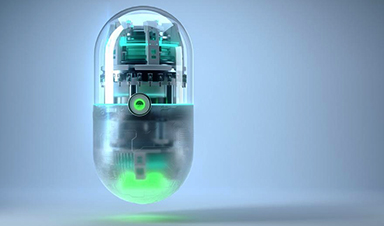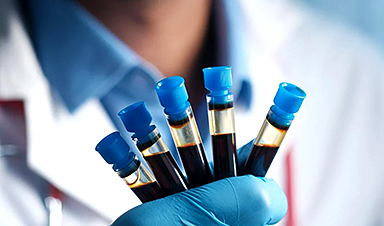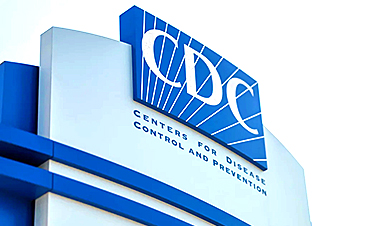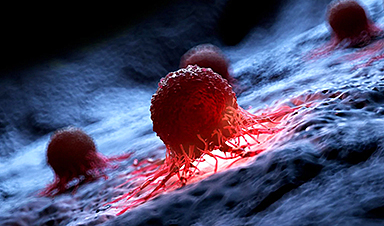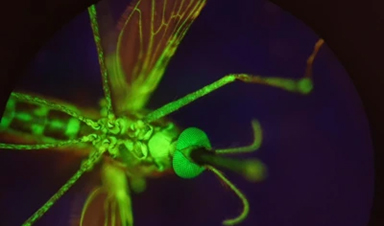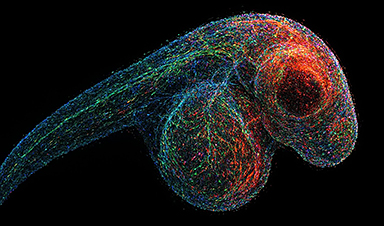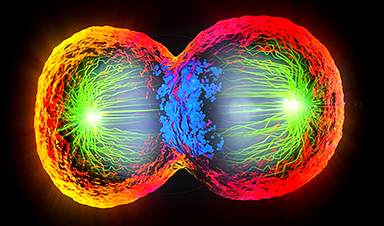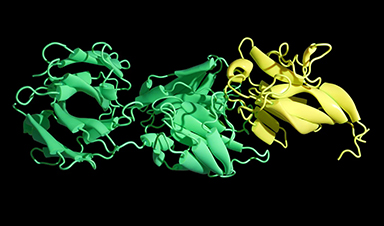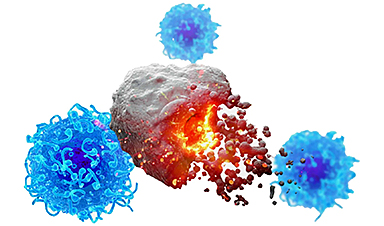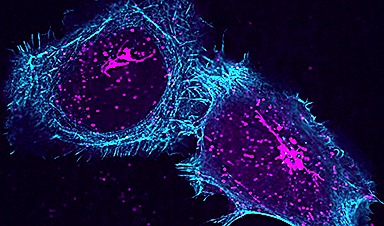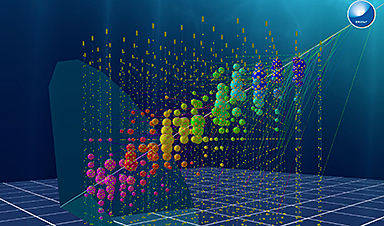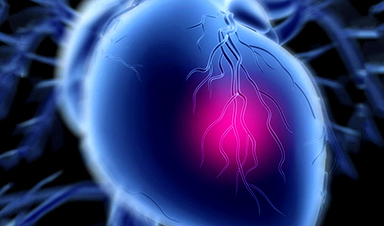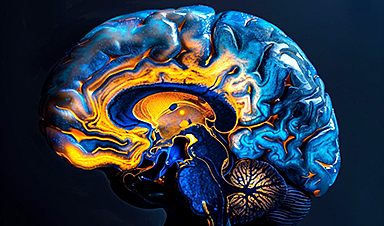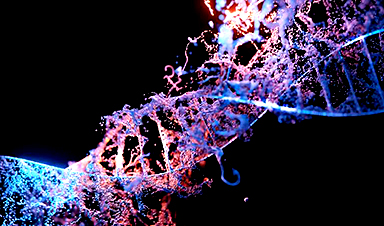Nanomedicines may offer clinicians a way to deliver precise, targeted therapy directly to tumors without damaging surrounding tissue. Yet, progress in the development of new drugs that treat cancer at the nanoparticle level has been frustratingly slow. Good results in animal models haven’t necessarily translated to clinical success in humans, in part because of low delivery efficiency of nanoparticles to tumors.
Now, with the support of a new $1.3 million grant from the National Institute of Biomedical Imaging and Bioengineering of the National Institutes of Health, researchers led by Zhoumeng Lin, B.Med., Ph.D., DABT, CPH, are building a tool that can offer drug researchers insight into how well a new nanoparticle-based cancer therapy will work, even before a drug enters animal testing.
This project will provide a tangible tool to improve the design of nanoparticles to accelerate clinical translation of cancer nanomedicines from animals to humans in order to benefit cancer patients.
Zhoumeng Lin, Associate Professor, Department of Environmental and Global Health, College of Public Health and Health Professions
Another anticipated benefit is the reduction or elimination of animal experimentation for new nanomedicines that are determined to have low delivery efficiency, Lin added.
Lin joined the university this summer from Kansas State University. He is the first faculty member in PHHP hired under UF’s artificial intelligence initiative, which seeks to make the university a national leader in AI. Lin’s expertise is in the development and application of computational technologies to address research questions related to nanomedicine, animal-derived food safety assessment, and environmental chemical risk assessment.
To build their predictive model of nanoparticle cancer therapies, researchers will use an AI technology known as artificial neural network and train it with hundreds of datasets from physiologically-based pharmacokinetic (PBPK) computer models. PBPK models describe the absorption, distribution, metabolism and excretion of a drug in the body using mathematical equations, and they can be used to predict the concentration of a drug following different therapies.
In this project, we will integrate PBPK modeling with AI approaches to build an AI-assisted smart model that can predict delivery efficiency of nanoparticles to tumors,” Lin said. “This approach is new in the fields of nanomedicine, pharmacology and toxicology.
Zhoumeng Lin, Associate Professor, Department of Environmental and Global Health, College of Public Health and Health Professions
Next, Lin’s co-investigator, Santosh Aryal, Ph.D., an associate professor in the department of pharmaceutical sciences and health outcomes at the University of Texas at Tyler, will conduct pharmacokinetic lab experiments using nanoparticles. The data from these experiments will be used to validate and/or optimize the new AI-PBPK model.
“We are excited about this collaboration and hope this will further open up novel avenues in cancer nanomedicine development,” Aryal said.
For the project’s final outcome, the team will convert the smart model into a publicly available web-based interface for use by nanomedicine researchers.
“This project addresses a crucial problem of low delivery efficiency of cancer nanomedicines, which has been a critical barrier to progress over the last 20 years,” Lin said. “This will greatly improve our fundamental understanding of the key factors of nanoparticle tumor delivery.”
News
New Blood Test Detects Alzheimer’s and Tracks Its Progression With 92% Accuracy
The new test could help identify which patients are most likely to benefit from new Alzheimer’s drugs. A newly developed blood test for Alzheimer’s disease not only helps confirm the presence of the condition but also [...]
The CDC buried a measles forecast that stressed the need for vaccinations
This story was originally published on ProPublica, a nonprofit newsroom that investigates abuses of power. Sign up to receive our biggest stories as soon as they’re published. ProPublica — Leaders at the Centers for Disease Control and Prevention [...]
Light-Driven Plasmonic Microrobots for Nanoparticle Manipulation
A recent study published in Nature Communications presents a new microrobotic platform designed to improve the precision and versatility of nanoparticle manipulation using light. Led by Jin Qin and colleagues, the research addresses limitations in traditional [...]
Cancer’s “Master Switch” Blocked for Good in Landmark Study
Researchers discovered peptides that permanently block a key cancer protein once thought untreatable, using a new screening method to test their effectiveness inside cells. For the first time, scientists have identified promising drug candidates [...]
AI self-cloning claims: A new frontier or a looming threat?
Chinese scientists claim that some AI models can replicate themselves and protect against shutdown. Has artificial intelligence crossed the so-called red line? Chinese researchers have published two reports on arXiv claiming that some artificial [...]
New Drug Turns Human Blood Into Mosquito-Killing Weapon
Nitisinone, a drug for rare diseases, kills mosquitoes when present in human blood and may become a new tool to fight malaria, offering longer-lasting, environmentally safer effects than ivermectin. Controlling mosquito populations is a [...]
DNA Microscopy Creates 3D Maps of Life From the Inside Out
What if you could take a picture of every gene inside a living organism—not with light, but with DNA itself? Scientists at the University of Chicago have pioneered a revolutionary imaging technique called volumetric DNA microscopy. It builds [...]
Scientists Just Captured the Stunning Process That Shapes Chromosomes
Scientists at EMBL have captured how human chromosomes fold into their signature rod shape during cell division, using a groundbreaking method called LoopTrace. By observing overlapping DNA loops forming in high resolution, they revealed that large [...]
Bird Flu Virus Is Mutating Fast – Scientists Say Our Vaccines May Not Be Enough
H5N1 influenza is evolving rapidly, weakening the effectiveness of existing antibodies and increasing its potential threat to humans. Scientists at UNC Charlotte and MIT used high-performance computational modeling to analyze thousands of viral protein-antibody interactions, revealing [...]
Revolutionary Cancer Vaccine Targets All Solid Tumors
The method triggers immune responses that inhibit melanoma, triple-negative breast cancer, lung carcinoma, and ovarian cancer. Cancer treatment vaccines have been in development since 2010, when the first was approved for prostate cancer, followed [...]
Scientists Uncover Hidden Protein Driving Autoimmune Attacks
Scientists have uncovered a critical piece of the puzzle in autoimmune diseases: a protein that helps release immune response molecules. By studying an ultra-rare condition, researchers identified ArfGAP2 as a key player in immune [...]
Mediterranean neutrino observatory sets new limits on quantum gravity
Quantum gravity is the missing link between general relativity and quantum mechanics, the yet-to-be-discovered key to a unified theory capable of explaining both the infinitely large and the infinitely small. The solution to this [...]
Challenging Previous Beliefs: Japanese Scientists Discover Hidden Protector of Heart
A Japanese research team found that the oxidized form of glutathione (GSSG) may protect heart tissue by modifying a key protein, potentially offering a novel therapeutic approach for ischemic heart failure. A new study [...]
Millions May Have Long COVID – So Why Can’t They Get Diagnosed?
Millions of people in England may be living with Long Covid without even realizing it. A large-scale analysis found that nearly 10% suspect they might have the condition but remain uncertain, often due to [...]
Researchers Reveal What Happens to Your Brain When You Don’t Get Enough Sleep
What if poor sleep was doing more than just making you tired? Researchers have discovered that disrupted sleep in older adults interferes with the brain’s ability to clean out waste, leading to memory problems [...]
How to prevent chronic inflammation from zombie-like cells that accumulate with age
In humans and other multicellular organisms, cells multiply. This defining feature allows embryos to grow into adulthood, and enables the healing of the many bumps, bruises and scrapes along the way. Certain factors can [...]
